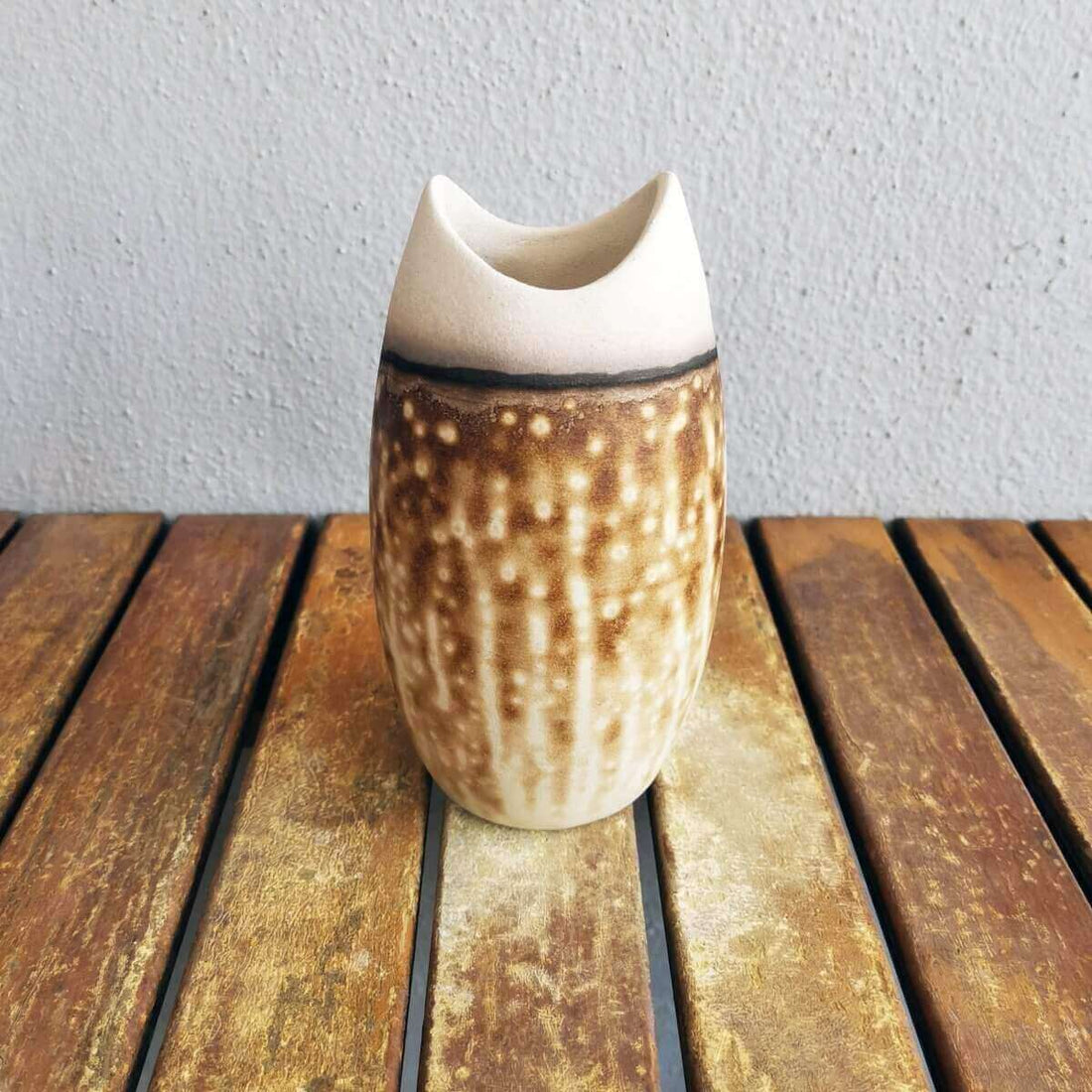
Obvara Raku Pottery: Unveiling the Ancient Alchemy of Creativity
In the vast and intricate world of pottery, where traditions span centuries and techniques weave stories, one art form stands out with its distinctive charm and captivating history: Obvara Raku pottery. This article takes you on a journey through the artistry of Obvara Raku, exploring its creation process, the uniqueness that sets it apart, the captivating designs and colors it boasts, and the intriguing history that underpins this time-honored technique.

Crafting Obvara Raku Pottery: The Dance of Fire and Brew
Obvara Raku pottery is as much about the alchemy of fire as it is about the magic of a brew. The creation process begins with shaping the clay into desired forms, much like traditional pottery. However, the key departure lies in the way the pieces are fired. After the initial bisque firing, the pieces are submerged into a mixture known as the "obvara brew." This brew typically consists of water, flour, yeast, and other secret ingredients that vary from artist to artist. The pieces are then removed from the brew and quickly exposed to intense heat, usually by placing them into a straw-filled container that catches fire. The rapid firing and cooling process gives birth to the characteristic crackling patterns and rustic appearance that define Obvara Raku pottery.

The Uniqueness of Obvara Raku: Where Unpredictability Reigns
What renders Obvara Raku truly unique is its unpredictable nature. Unlike many pottery techniques that strive for controlled outcomes, Obvara Raku embraces the serendipity of the process. The crackling patterns that emerge are a product of the rapid cooling and the interaction of the clay with the brew. This artistic surrender to the capriciousness of the firing process imbues each piece with its own individual story. The depth of the crackles, the hues of the glaze, and the overall rustic charm are the result of an intricate dance between the artist's intent and the fire's whims.

Design and Color Palette of Obvara Pieces: Nature's Palette Unleashed
Obvara Raku pottery comes alive not just through its texture and crackling patterns but also through its design and color palette. Artists often draw inspiration from nature, imbuing their pieces with organic motifs and earthy aesthetics. The pieces may showcase leaves, flowers, and other natural forms, echoing the connection between the pottery and the world it emerges from. The color palette of Obvara pieces ranges from warm earth tones to vibrant hues, each piece a canvas that narrates its own story. The rich diversity in color and design adds to the allure of Obvara Raku, making it a cherished addition to collectors' shelves and art enthusiasts' hearts.

Tracing the History of the Obvara Technique: From Europe to Modernity
The history of the Obvara technique traces its roots back to Eastern Europe, particularly the Baltic regions. Historically, this firing technique was used to create functional pieces like bowls, plates, and pitchers. The term "obvara" itself comes from the Belarusian word for "dip." It was a pragmatic approach to pottery, offering both utilitarian vessels and a rustic aesthetic. Over time, the technique migrated and evolved, with contemporary artists infusing their creativity and individuality into the process.
In Conclusion
Obvara Raku pottery stands as a testament to the marriage of art and tradition, fire and creativity. It beckons us to embrace the beauty in imperfection, the wonder in unpredictability, and the deep connection between the artist's hands and the elemental forces that shape the clay. As we witness the crackling patterns and explore the intricate designs of Obvara pieces, we are invited into a world where centuries-old techniques meet modern sensibilities.
This technique, steeped in history and innovation, captures the essence of pottery as a dynamic art form that bridges time and culture. The process of crafting Obvara Raku pottery, the uniqueness that defines it, the vibrant designs that adorn it, and the history that anchors it all weave together a tapestry of human creativity and the transformative power of fire. In a world where mass production often overshadows the handcrafted, Obvara Raku pottery stands as a reminder of the beauty that emerges when artistry and tradition coalesce.
